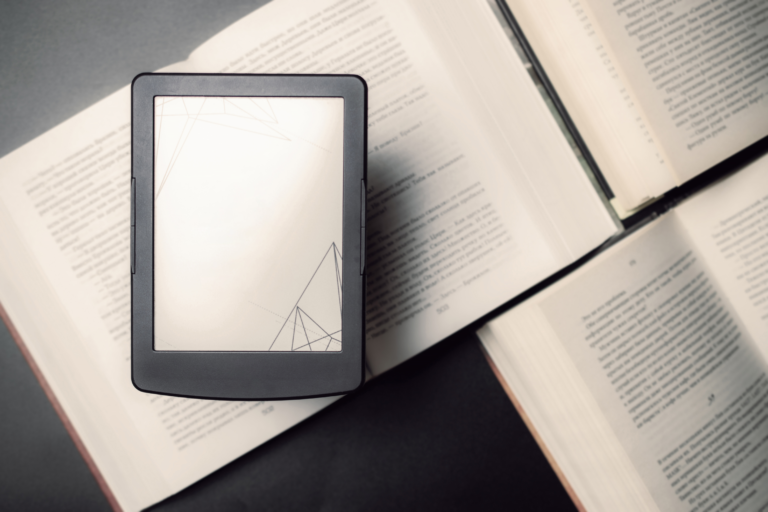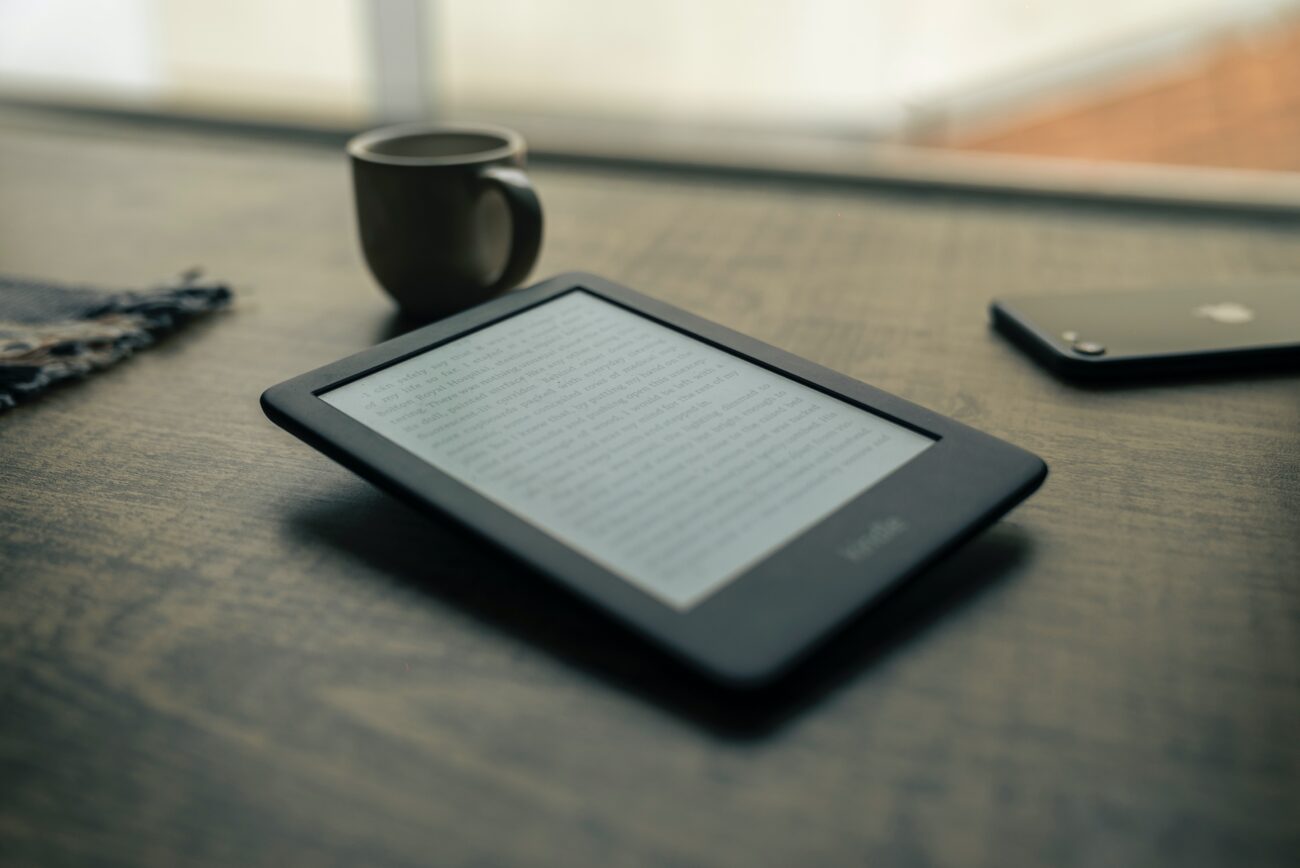“Books were crystals with fixed content. They could be read with an opton. It was even similar to a book, but with one and only one page between the covers. With a touch, more pages of text would appear on it.”
Stanislaw Lem’s vision from the book titled “Return from the Stars” published in 1961

E Ink technology. What is e-paper and how does it work?
E Ink is a display device that mimics the appearance of classic ink on paper. Most of us were already familiar with this technology – popular ebook readers are based precisely on e-paper. The appearance of the first e-readers was a real revolution! In a nutshell, the operation of electronic paper is based on reflecting, rather than emitting, light. As a result, using an e-reader becomes more comfortable for the eyes, and the wide viewing angle makes the content readable from different perspectives. Most importantly, it allows content to be read even in strong sunlight. Classic electronic displays emit light, so that the image depends on external conditions – it is unreadable in bright light. Too long use tires our eyes and exposes them to radiation. It is much more comfortable to read a book in the form of an ebook, on an e-paper reader, than on a phone or computer.
The electronic paper sheet contains many small capsules containing both white, positively charged particles and black, negatively charged particles. The capsules, along with the particles, are dispersed in a transparent liquid, and this ooze is applied to an electronic circuit with electrodes that control the display. By applying the appropriate electrical potential, selected particles are attracted upward, making them visible on the screen. This makes it possible to arrange words and pictures freely.
The emergence of what is now the most popular version of e-paper
E-paper, also known as Gyricon, was first introduced in the 1970s by Nick Sheridan of Xerox’s Palo Alto Research Center. The technology is based on microscopic polyethylene beads, 75-106 micrometers in diameter, which have one white side and another black side. These beads are sandwiched between two thin films, one of which has conductive properties. Under the influence of a punctual electric field, the beads rotate so that their black side faces the surface of the paper.
The development of e-paper technology was the work of Joseph Jacobson, an MIT professor and founder of E Ink. His innovative solution, known as Vizplex, was introduced in the first generation of E Ink displays. Instead of two-color balls colored in half-and-half proportions, Vizplex used thousands of capsules filled with a transparent liquid and black and white pigments. This made the image shown by the screen more accurate.
As before in Sheridon’s solution, the capsules of colored particles were electrically charged, allowing them to move under the influence of electricity and form an image. Instead of a glass screen, flexible plastic was used. And it is this version of e-paper that we use to this day. E Ink Corp is still working on developing the technology.

What are the advantages and applications of E Ink technology?
E Ink screens are energy-efficient and allow for long run times on a single charge. They tire the eyes less and provide better readability in different lighting conditions, including sunlight, and at different viewing angles. All thanks to the fact that screens using this technology are passive and require only minimal voltage to change the image. They are used in the production of e-readers, smart watches, product labels, billboards, business cards or displays on public transportation. In medicine, they are used to produce electrophoretic pH papers and electrophoretic diagnostic papers.
In summary, the most important advantages of E ink technology are:
– Ultra-low light emission: e-paper uses natural ambient light to reflect the image, which means it does not emit harmful UV rays. Thus, it is more friendly to our eyes;
– High image quality: the text displayed on the screen is clear and resembles a printed page. The technologies used ensure good readability in different lighting conditions, regardless of the viewing angle;
– Long battery life: devices using E Ink consume power only when the content of the screen changes. They consume much less power than classic LED or OLED displays, extending battery life;- Lightweight and easy to transport: devices using E Ink are usually very light and easy to transport;
– Flexibility: the technology allows the production of flexible and bendable screens, which significantly increases the possibilities of its use (e.g. as an advertising medium, decorative element).
Does E Ink technology have any disadvantages?
The electronic paper does not glow or fade when the sun’s rays fall on it. It works very well even in bright sunlight, but in the dark we will not read a word, because the display does not emit light, but only reflects it. Therefore, when using the devices at night or on a very cloudy day, it is important to use additional lighting.
Further work on E Ink
Research on e-paper is focused on introducing new solutions for displaying different colors, not just black and white. There are now screens that use three, four or more pigments, greatly expanding the possibilities of this technology.
E Ink unveils Triton color e-paper
Sources:
https://www.morele.net/wiadomosc/jak-dzialaja-popularne-energooszczedne-wyswietlacze-e-ink-i-co-warto-o-nich-wiedziec-kupujac-urzadzenie-z-takim-wyswietlaczem/17827/
https://electronics.howstuffworks.com/gadgets/high-tech-gadgets/e-ink.htm
https://unisystem.pl/uni-abc/czym-jest-e-papier-ewolucja-technologii
https://www.shemeck.pl/artykuly/72_Zalety-i-wady-e-paper.html
